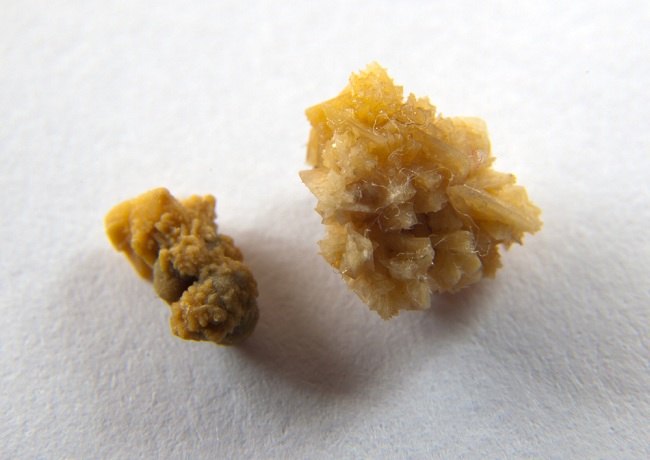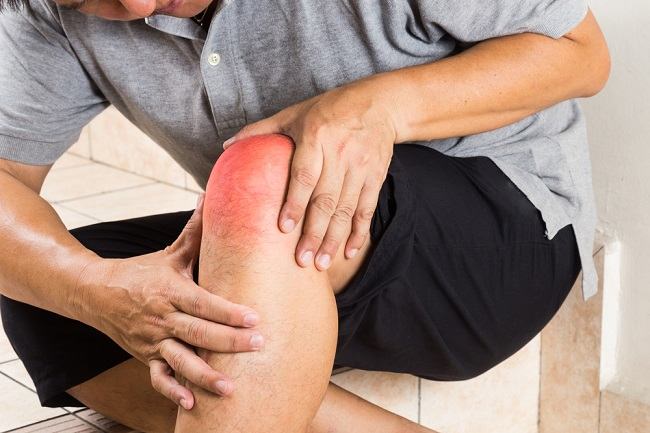Acanthosis nigricans is a skin disorder characterized by darker, thicker, and velvety textured skin in the folds of the body.
Acanthosis nigricans can be experienced by all age groups. This condition often occurs in someone who is obese. Acanthosis nigricans is not contagious and harmless, but it can be a sign of a more serious health problem.

Causes of Acanthosis Nigricans
The exact cause of acanthosis nigricans is not known. However, this skin disorder is often associated with increased insulin levels and insulin resistance. Some of the diseases associated with acanthosis nigricans are:
Insulin Resistance
Most people with acanthosis nigricans have insulin resistance. When experiencing this condition, insulin can not work effectively so that there is an increase in sugar levels, accompanied by an increase in the amount of insulin.
Increased amounts of insulin cause skin cells in some parts of the body to grow rapidly and cause changes in skin color and texture. Insulin resistance can lead to type 2 diabetes.
Hormonal disorders
Acanthosis nigricans often occurs in someone who has a disease or condition that affects hormones in the body, such as Addison's disease, Cushing's syndrome, polycystic ovary syndrome (PCOS), or hypothyroidism.
Cancer
Acanthosis nigricans can also occur due to tumor growth or cancer in the stomach, colon, or liver.
Use of drugs and supplements
In addition to certain diseases or medical conditions, acanthosis nigricans can be triggered by the use of drugs and supplements, such as oral contraceptives (birth control pills), corticosteroids., and niacin in high doses
In addition to the causes above, there are several factors that can increase a person's risk of suffering from acanthosis nigricans, namely:
- Coming from a race that has dark skin
- Having a family with acanthosis nigricans
- Being overweight or obese
Symptoms of Acanthosis Nigricans
Acanthosis nigricans is characterized by skin changes, such as skin that is gray-brown, blackened, or darker than the surrounding skin. These skin changes usually appear slowly. When experiencing acanthosis nigricans the patient's skin will be drier, rougher, thicker, textured like velvet, and feel itchy and smelly.
Changes in skin color and texture that occur in acanthosis nigricans can occur in several areas of the skin, such as the neck, lips, armpits, palms, knuckles, elbows, knees, groin, or soles of the feet.
When to go to the doctor
If you experience skin changes, such as skin that is gray-brown, darker or darker than the surrounding skin, see a doctor. Especially if these symptoms appear suddenly, spread quickly, and feel increasingly bothersome.
If you have been diagnosed with acanthosis nigricans, have regular check-ups to monitor therapy for the disease or condition that causes acanthosis nigricans.
Diagnosis of Acanthosis Nigricans
To diagnose acanthosis nigricans, the doctor will ask and answer questions about the patient's and family's complaints and medical history, including a history of taking vitamin supplements or supplements for building muscle mass.
After that, the doctor will make direct observations of the patient's skin to see changes in skin color and texture.
To determine the cause or condition that may cause acanthosis nigricans, the doctor will also perform follow-up examinations in the form of:
- Blood tests, to determine insulin and blood sugar levels
- Skin biopsy, to detect abnormal tissue, so that the cause of acanthosis nigricans can be identified
Acanthosis Nigricans Pengobatan Treatment
The goal of treatment for acanthosis nigricans is to treat the underlying cause. If the cause can be treated, acanthosis nigricans can improve on its own.
The following are some treatment steps that can be taken for people with acanthosis nigricans:
- Weight lossPatients with acanthosis nigricans who are overweight are advised to lose weight with a healthy diet and regular exercise.
- OperationIf acanthosis nigricans is triggered by a tumor or cancer, surgical removal of the tumor or cancer may be an option.
- Laser therapyLaser therapy is done using laser beams. This therapy aims to reduce the thickness of the skin.
- DrugsIf it is caused by hormonal disorders, the doctor will prescribe drugs to improve hormone levels. Doctors will also give blood sugar-lowering drugs if the patient has diabetes.
In addition, people with acanthosis nigricans are also advised to do the following ways to improve the appearance and condition of the skin:
- Using a skin lightening cream that contains retinol, alpha hydroxy acid, or salicylic acid
- Using an antibiotic cream if there is a secondary infection in the skin
Complications of Acanthosis Nigricans
Changes in skin color and structure due to acanthosis nigricans can interfere with the self-confidence of the sufferer. Acanthosis nigricans is also often associated with an increased risk of developing type 2 diabetes later in life.
If caused by certain conditions, such as obesity that does not get treatment, some complications that can arise are increased blood sugar, sleep apnea, metabolic disorders, and an increased risk of heart disease.
Prevention of Acanthosis Nigricans
The main thing that can be done to prevent acanthosis nigricans is to avoid factors that can increase the risk of developing diseases that can increase the risk of acanthosis nigricans, such as:
- Eat low-sugar foods, to prevent an increase in blood sugar
- Maintain an ideal body weight by eating a healthy and balanced diet and exercising regularly
- Always consult a doctor before using certain medications or supplements









